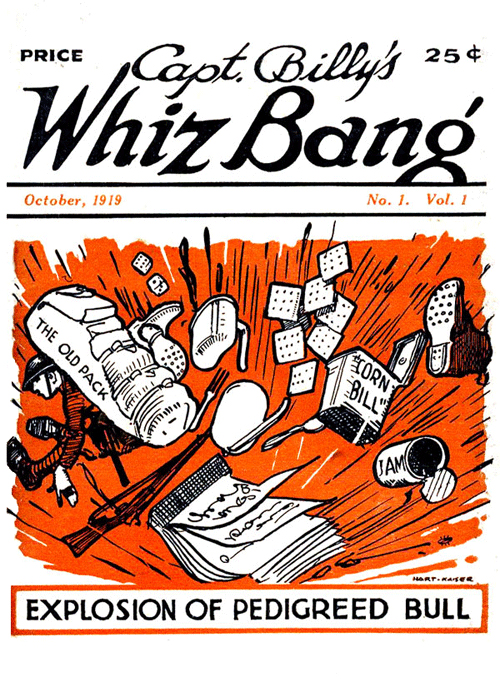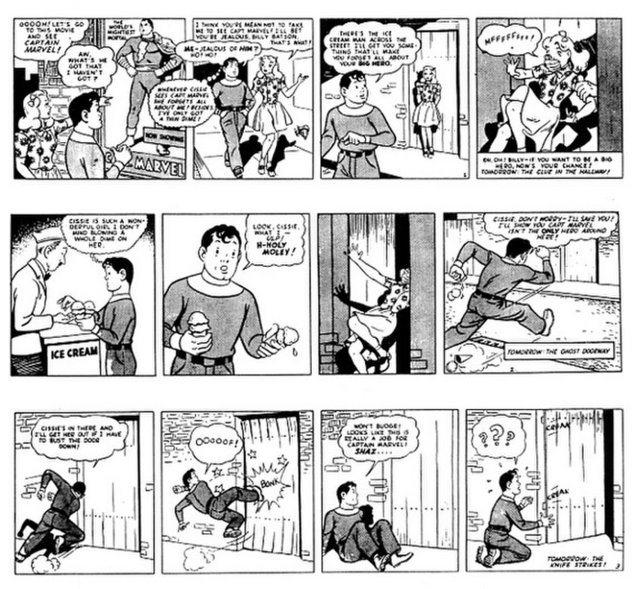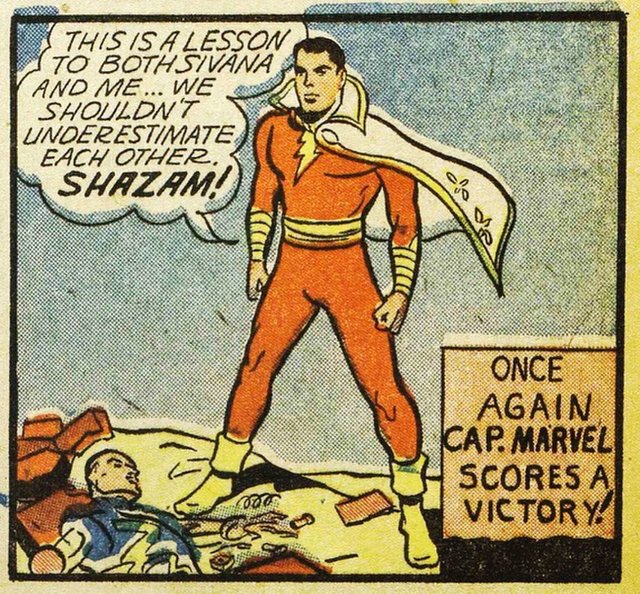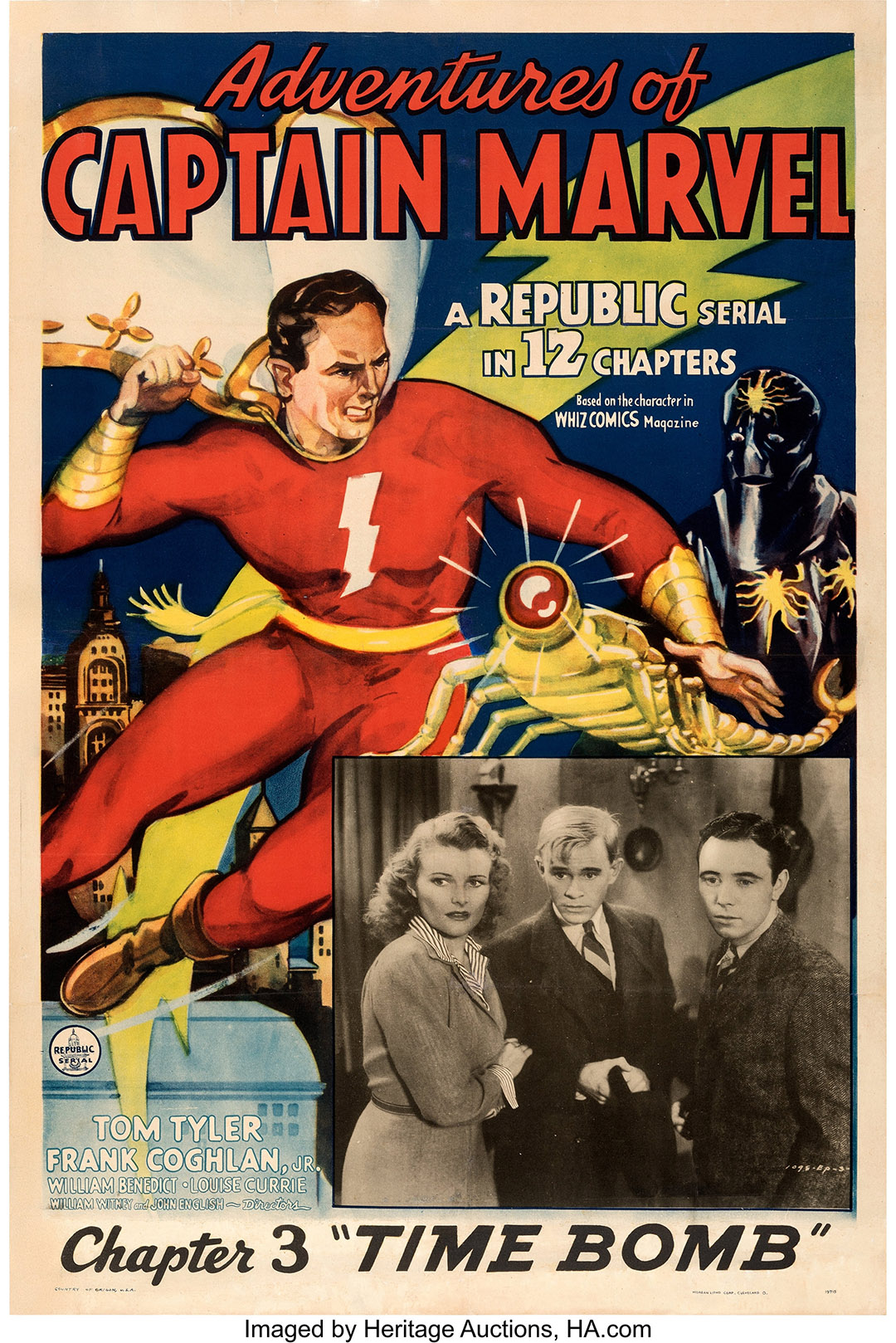The Heroes of Fawcett Comics
An Oral History of Captain Marvel (1/12)
The Fawcett Years, part 1
By Zack Smith • 24 December 2010
The Fawcett Years: Part 1 Part 2 Part 3 The Lost Years: Part 1 Part 2 Part 3 The Shazam! Years: Part 1 Part 2 Part 3 • New Beginning Modern Years The Future
© Zack Smith; originally published by Newsarama
To coincide with the 70th anniversary of Captain Marvel’s first appearance in 1940, Newsarama commissioned Zack Smith to talk with professionals in the comic book and entertainment industries about the legendary hero.
Every installment included original and rarely-seen art provided by some of the industry’s best comic artists and the generous collectors at Comic Art Fans. The original articles also featured all-new pieces of art created exclusively for this series.
This series is a great companion for fans old and new, especially with the 2019 and 2023 Shazam! films (and Marvel's Captain Marvel feature film). Also around this time, DC released the Superman/Shazam: The Return of Black Adam animated feature. Chip Kidd and Geoff Spear published Shazam!: The Golden Age of the World’s Mightiest Mortal. And Black Adam hit the big screens in 2022.
The Original Captain Marvel: The Fawcett Years



The origins of Captain Marvel date back to the first World War, when a 16-year-old named Wilford Fawcett ran away to join the army. Fawcett rose to the rank of Captain, and after the war put out a publication of bawdy cartoons called Captain Billy’s Whiz-Bang, later referenced in the song “Trouble” in The Music Man as an example of something that could lead a youth astray (a reprint is available from About Comics).
By late 1939, Fawcett began expanding into a line of comics, which launched in February 1940, the same month “Captain Billy” passed away. As the story goes, in 1939 Roscoe Kent Fawcett commanded his crew to create a character like Superman, only with an identity of a boy aged 10 to 12. This wording would come back to haunt the company many times over.
Editor Ralph Daigh turned the project over to writer Bill Parker, who, legend has it, originally wanted to craft a team of six heroes, each with a different power, led by Captain Thunder. Daigh suggested turning them into one hero instead, and Parker complied.
Parker’s revised idea was given life by artist Clarence Charles “C.C.” Beck, who crafted a red-clad super-hero Beck said was designed after the actor Fred MacMurray, though Roscoe Fawcett would sometimes claim he was actually based on Cary Grant.
“Captain Thunder” first appeared in a sample issue [an "ashcan"] that ran under the titles of Flash Comics and Thrill Comics in 1939. Unfortunately, Fawcett found that they couldn’t trademark the titles “Captain Thunder,” “Thrill Comics” or even “Flash Comics,” due to other companies taking those names. A few rewrites were in order.
In February 1940, the book officially hit newsstands under the title Whiz Comics #2, and its cover character officially renamed Captain Marvel. The cover, perhaps not coincidentally, mirrored Superman’s first appearance on the cover of Action Comics #1 (June 1938). Even less of a coincidence were the echoes of Captain Billy’s book, both in the title and the name of its main character.
That initial story set up the legend comic fans know — orphan newsboy Billy Batson is summoned down a mysterious subway tunnel, past statues of the Seven Deadly Enemies of Man (Greed, Hate, Laziness, etc.) to meet the evil-battling wizard Shazam, who is about to die (he sticks around as a ghost). Asked to be the wizard’s new champion, Billy accepts the challenge.
By uttering the wizard’s name, Billy is able to summon the lightning that brings wisdom of Solomon, the strength of Hercules, the stamina of Atlas, the power of Zeus, the courage of Achilles and the speed of Mercury — The World’s Mightiest Mortal, Captain Marvel!
It was a concept no kid could resist. Whiz Comics #2 sold a half-million copies, and within a year, Captain Marvel had his own book, Captain Marvel Adventures.
Comics creators weigh in on this landmark comic book:
- Mark Waid (Kingdom Come, other Captain Marvel stories):
- Jerry Ordway (writer/artist, The Power of Shazam, others):
“It was huge, such a big seller, and so much fun to read.”
“He’s probably one of the best-designed characters ever. People just recognize that red outfit and that lightning bold instantly.”
- Mike Kunkel (writer/artist, Billy Batson and the Magic of Shazam):
“For me, Captain Marvel just represents a lot of that very core children’s wish-fulfillment. It’s what we all grew up enjoying in super-heroes, and wanting to be the super-hero. And I think that represented a very honest and tangible version of that.”
“A lot of the fun of Captain Marvel came from C.C. Beck. There’s an honesty to the way he approached it — something that said ‘this is who Cap is.’ It was fun, but also honest.”

- Jeff Smith (writer/artist, Shazam!: The Monster Society of Evil):
“It’s just such a great idea — you say a magic word, and suddenly you can fly, and bullets will bounce off you. Just a really, simple, great concept.
“I think the key is that magic word, ‘Shazam.’ Magic words are something that go back in fiction, back to myths and legends and The Arabian Nights. It’s just something that resonates for us, I think. And it’s such a good magic word — it sounds like ‘Alakazam.’
“Even Gomer Pyle was saying it. Dave Chappelle was saying it on his show. I’ve heard it in rap videos. Everyone knows what it means, it’s ‘Shazam!’ It’s the transformation into something else, like ‘Let’s go!’ It’s a call to action.
“And the costume — the red outfit with the lightning bolt. How many times in our lifetime have we seen generic parody super-heroes, whether in an advertisement or anywhere, with a lightning bolt on their costume? The lightning bolt has almost become the generic symbol for a super-hero, and it has its roots in Captain Marvel.”
Jackson Bostwick (TV’s Captain Marvel):
“Captain Marvel, unlike the heroes of mythology, is a fictional super-hero initially created in 1939 to entertain the imagination and sell comic books, but not to be believed as being real, or, even further, to be worshipped as a god. (C.C. Beck’s drawings of Cap and the gang plainly illustrate they were meant to be seen as whimsical with a healthy dash of morality thrown in to flavor the fun).
“Still, as a tribute to the Good Captain’s immense popularity as a fighter of the evils of man (the Seven Deadly Sins) and a colorful array of dastardly villains (Dr. Sivana, Mr. Mind, Captain Nazi, Black Adam, King Kull, etc.) he became a role model for generations of kids (and adults) both in the pages of those Golden Age comics and later in the media of film and television; and yes, I was one of those kids.
“The Big Red Cheese, along with The Phantom and Plastic Man, were my favorite comics to read because of the stories and the artwork. I also was fascinated with Classics Illustrated (the only comics my dear mother didn’t throw out while I was in the Army because as she said, ‘they have an educational value’).”
Roy Thomas (writer, Shazam: The New Beginning, others):
“He was one of the original characters I discovered. As a kid, I loved that idea of a magic word that could turn you into a super-hero.
“I think I was six or so when I discovered him. There was one that was the second-to-last chapter or so of the Mr. Mind serial, and there was another I found in a barbershop where he went into an anthill. Those books made me very enthusiastic about Captain Marvel, and I kept buying as many of those comics as I could until they went out of business, which was when I was about 12.”
Chip Kidd (author, Shazam!: The Golden Age of the World’s Mightiest Mortal):
“They literally caught lightning in a bottle — this immersive world that kids could really be a part of. It’s a shame that from the get-go, they had the specter of the lawsuit hanging over them from the beginning.”
The first story in Whiz Comics also established other parts of Captain Marvel’s mythology, most notably his greatest enemy, Doctor Thaddeus Bodog Sivana, a disenfranchised scientist out for revenge against the world that had shunned his inventions by becoming “Rightful Ruler of the Universe.”
Sivana’s creepy look, petulant attitude (it was he who coined Captain Marvel’s nickname of “The Big Red Cheese”) and devious laugh of “Heh! Heh! Heh!” made him a character kids could love to hate, the ultimate adult trying to keep a kid down. Beck claimed he based Sivana’s bald, craggy look on a Long Island pharmacist.
Unlike many villains, Sivana figured out Billy’s duel identity quickly, and many stories involved him finding new ways to keep him from saying “Shazam!” He initially had two children, Beautia and Magnificus, who became Captain Marvel’s allies (and Beautia had an uncomfortable flirtation with the Captain), but later, his more deadly offspring were also introduced.
The first story also got Billy Batson a job as a boy newscaster for radio station WHIZ, giving him plenty of opportunities to find trouble, and address readers directly.
Though C.C. Beck’s cartoony style defined the look of Captain Marvel and his world, what many fans don’t know is that two other legendary comic creators also worked on those early stories.


Chip Kidd:
“There was a brief time of about a month where Joe Simon and Jack Kirby where literally working on Captain America by day and Captain Marvel by night, to see what Captain they would throw their allegiance with.
“They did three stories total, and it looks like an amalgam of Jack Kirby and C.C. Beck. With Captain America, I think, they could do their own thing, own it more creatively from a design standpoint. It’s interesting, but you can see their hearts were really in Captain America, and I think they made the right decision.”
By 1941, Captain Marvel hit it big enough that he became the first official “super-hero” to star in a motion picture. Republic Pictures, which had failed to secure the screen rights to Superman, turned to Fawcett for help crafting their own super-hero project. In 1941, the serial The Adventures of Captain Marvel hit the screen with Tom Tyler as the Captain, and was a box-office smash, now regarded as one of the best adventure serials ever made.
The film had an unfortunate side effect — it put Fawcett on the radar of DC Comics. DC had been highly successful at shutting down comic book characters designed to imitate Superman. And Captain Marvel was even worse — he was outselling their books.
The result was a series of lawsuits that stretched on for years, and would change the character’s fate for decades to come.
Elliot Maggin (writer, 1970s Shazam series, Kingdom Come novelization):
“There was no merit to that lawsuit, I’m convinced. It was just a way to keep a competitor occupied.”
Michael Uslan (Executive Producer of all Batman movies):
“When I was in law-school, I wrote a 104-page-paper that actually won an award, on copyright infringement and unfair competition in the comic book industry. And so I researched and studied not only the DC/Fawcett case, but everything that led up to it.
“There was an action against Fawcett by DC that stopped ‘Master Man’ before Captain Marvel, and many others. Otto and C.C. Beck certainly gave me all the dirt on it.
“Then, when I was working at DC Comics in college and law school and (DC VP, later President) Sol Harrison asked me to clean out the supply closet, which was the size of the closet at the end of Raiders of the Lost Ark, I found the official paperwork of DC Comics and the original scrapbooks that Louis Nizer and his team at DC had made to prove that Captain Marvel was imitating things that Superman was doing, and exhibits from Fawcett to indicate that Popeye and legendary before Superman did (the same) stuff.”
Chip Kidd:
“The biggest difference is that idea of the boy turning into this super-hero. That’s different enough that — and I’m biased, obviously — that if I were the judge, I’d throw this case out. It’s apples and oranges — to me, the lawsuit wasn’t necessarily baseless, but meaningless.
“Who knows? Maybe in 1940, the super-hero concept was so new unto itself that it seemed like they had a case in retrospect.”
Even with the lawsuit, Captain Marvel remained a hit on the newsstands. By the mid-1940s, Captain Marvel Adventures sold 1.8 million copies — more than the top 10 books in today’s direct market combined — twice a month. Captain Marvel was the biggest super-hero of them all — and his world was about to get much bigger…
Continue: The Fawcett Years, part 2
Acknowledgements
- Special thanks to Christopher Irving of Graphic NYC for information on the Captain Marvel movie serial. Check out his book, Cliffhanger!: Cinematic Superheroes of the Serials: 1941–1952. Hermes Press, 2023.